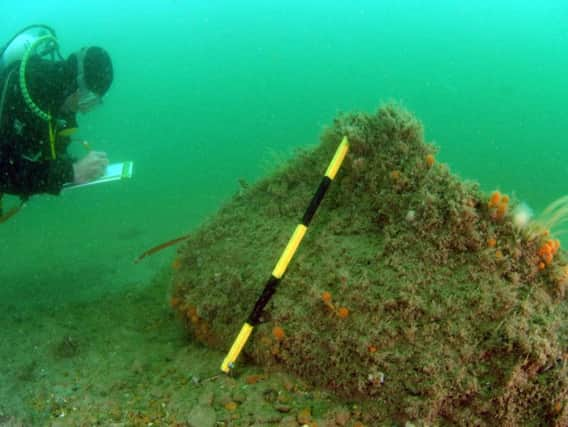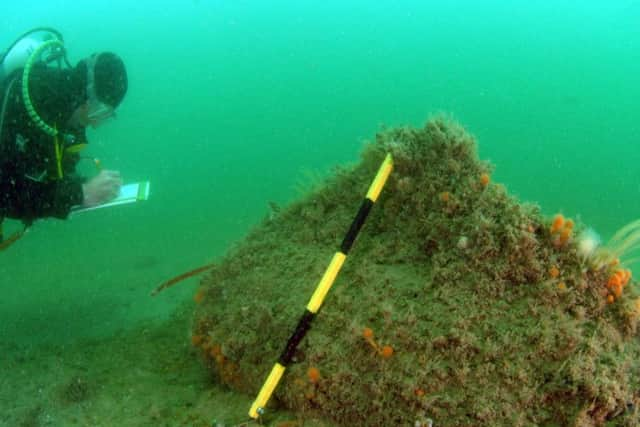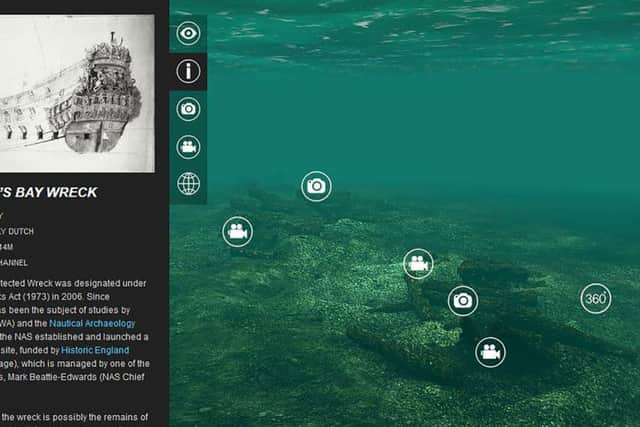VIDEO: Virtual tour explores Norman's Bay ship wreck


Now, thanks to Historic England, you can discover the Norman’s Bay Wreck using one of its 13 virtual tours.
The tour uses technologies including multi-image photogrammetric recording, 3D printing of geophysical survey data and virtual reality and augmented reality techniques.
Advertisement
Hide AdAdvertisement
Hide AdAlison James, a maritime archaeologist at Historic England, said: “We are really pleased to be able to open up another one of our protected wreck sites to a wider audience regardless of their age or abilities.


“We hope the virtual trails will inspire more people to take up diving and visit the sites themselves.”
The Norman’s Bay Wreck, which was designated under the Protection of Wrecks Act in 2006, was discovered by local drivers Martin Wiltshire, Steve Pace and Paul Stratford whilst they tried to free a lobster pot in Pevensey Bay.
Today the wreck site contains a cluster of at least fifty-one iron guns, timber hull structure and various other artefacts including a large anchor on top of a ballast mound.
Advertisement
Hide AdAdvertisement
Hide AdA copper alloy cauldron that was recovered by an anonymous local diver in the 1990s is now on display in The Shipwreck Museum in Hastings.


The exact identify of the wreck is still being researched but the archaeological and historical evidence suggests that the Norman’s Bay Wreck is actually that of a 17th century 64-gun Dutch Warship, the Wapen Van Utrecht which sank during the Battle of Beachy Head in 1690.
A recent paper published in the International Journal for Nautical Archaeology argued that of the ten Dutch ships lost in the Battle of Beachy Head, the Wapen Van Utrecht is the only plausible candidate for the Norman’s Bay Wreck. The Nautical Archaeology Society (NAS) will continue to work on the site in 2018.
Mark Beattie-Edwards, the NAS Chief Executive Officer, said: “We have been diving on the Norman’s Bay Wreck since 2010 and have spent a lot of time trying to understand the extent of the site.
Advertisement
Hide AdAdvertisement
Hide Ad“This year, we are excited to be able to show the world what the site looks like on the Sussex seabed, through the development of the virtual dive. The project team hopes this new work can raise awareness and interest in this amazing piece of underwater cultural heritage.”
Of the 53 protected wreck sites off England there are currently five that can be accessed via a protected wreck dive trail.
The nature of maritime archaeology - lying at the bottom of the seabed in an area only accessible by those with the right training and equipment - has meant that protected wreck sites have only engaged with a very small number of people.
Over recent years Historic England has commissioned the development of these 13 virtual dive trails on a number of sites to allow everyone to tour an historic shipwreck without getting wet.
The tours allow viewers to see a clear 3D image of a site which brings ‘maritime archaeology to life for the non-diver’.
To find out more, please see www.nauticalarchaeologysociety.org